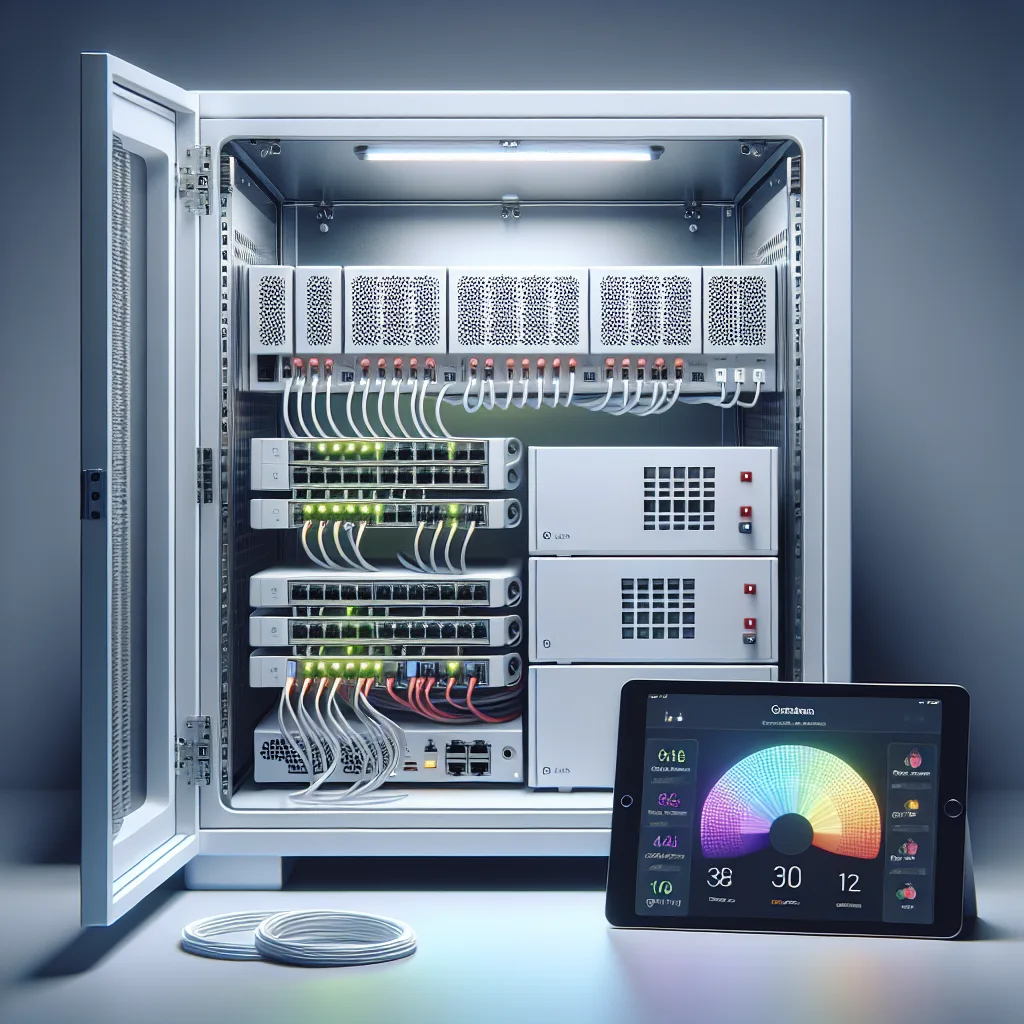Come take a tour of my friendly, efficient, and compact home lab setup—no giant server rack required.
It seems like every time I have friends over, someone eventually points to the small white cabinet in my living room and asks, “So, what’s actually in there?” They’re always surprised when I tell them it’s the heart of my digital life. I’ve been refining my home lab setup for years, and this latest version is my favorite yet. It’s quiet, compact, and sips electricity, proving you don’t need a huge, noisy server rack in your basement to run your own corner of the internet.
My whole setup is built around a simple idea: efficiency. It all lives inside a clean, modern cabinet, with a couple of quiet fans that automatically kick on when things get warm. It’s a set-and-forget system that hums along at a gentle 80 watts—about the same as a single old-school lightbulb.
For control and monitoring, I have a small 13-inch 4K touchscreen next to the cabinet that cycles through my main Grafana dashboard, showing me the health of all my systems at a glance. I also have an iPad mounted for quick access to my home controls. It’s my mission control, but it blends right into the room.
My Compact Home Lab Setup Philosophy
I don’t run a massive data center. My goal is to solve my own everyday problems and have a bit of fun while doing it. That means focusing on small, power-efficient hardware that is still powerful enough to handle everything I throw at it.
This approach keeps costs down, reduces noise, and makes the whole project much more manageable. You don’t need to dedicate a whole room to a home lab. My entire setup could fit on a single bookshelf.
The Brains of the Operation: The Hardware
So, what’s actually running the show? It all starts with a pair of fantastic mini PCs.
- The Servers: I use two Beelink mini PCs, one with an AMD 6600H processor and the other with a slightly more powerful 6800U. They’re tiny, quiet, and surprisingly capable.
- Server 1 (The Watchtower): This one is dedicated to monitoring. It runs Grafana, a tool that creates those cool-looking dashboards. It also handles all my system alerts and notifications, letting me know if anything goes offline.
- Server 2 (The Workhorse): This is my main application server. It runs Docker, which lets me easily manage a bunch of different services that I use every single day. More on those in a bit!
- The Network: A solid network is the backbone of any good home lab setup.
- Router: I’m using a nanoPi R4S, a tiny single-board computer running OpenWrt, a powerful and customizable open-source router firmware. It gives me incredible control over my network traffic.
- Switch: From the router, everything connects to a MikroTik 16-port switch. It’s a simple, reliable piece of gear that just works.
- The Helpers:
- Backups: I have a small Synology DS124 NAS that has one job: backing up everything. It’s my safety net.
- Ad-Blocking: A Raspberry Pi 4 runs Pi-hole, which blocks ads across my entire home network. If you’ve never tried it, it’s a game-changer.
- Smart Home: Another Raspberry Pi 4 runs Homebridge, which lets me connect all my various smart home gadgets into Apple’s HomeKit ecosystem.
The Software: What My Home Lab Actually Does
Hardware is cool, but it’s the software that makes it useful. My main server runs several self-hosted applications that have genuinely improved my digital life.
- Vaultwarden: This is a self-hosted password manager that’s compatible with Bitwarden. I control my own data, and it’s accessible from all my devices.
- Immich: A self-hosted photo and video backup solution. Think of it as your own personal Google Photos or iCloud Photos. My phone automatically backs up to it, and I don’t have to worry about running out of cloud storage.
- Paperless-ngx: This service has been amazing for reducing clutter. I scan documents, receipts, and mail, and Paperless automatically OCRs them, tags them, and files them away. I can find any document in seconds.
- n8n: This is a workflow automation tool. For example, I have an automation that takes articles I save to a read-it-later service, converts them to speech, and creates a private podcast for me to listen to.
- Linkding: A simple, self-hosted bookmarking service to save and tag links I find interesting.
Is a Project Like This Right for You?
If you’re curious about technology and like the idea of having more control over your digital world, then a home lab might be a perfect hobby. My journey has been a gradual process of learning and tweaking.
You don’t have to build this exact setup. You could start with just a single Raspberry Pi or an old laptop. The beauty of a home lab setup is that it can be whatever you want it to be. Start small, find a problem you want to solve, and have fun building something that is uniquely yours. It’s a rewarding project that’s both practical and endlessly interesting.
